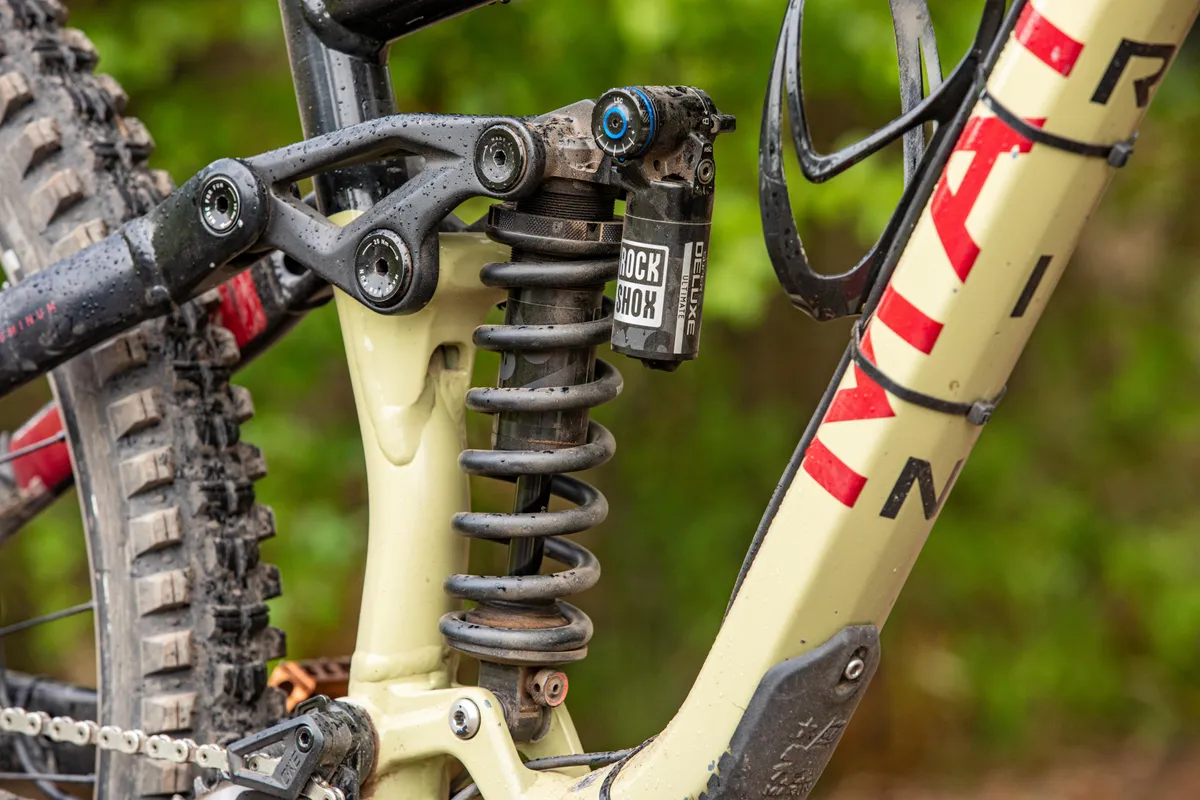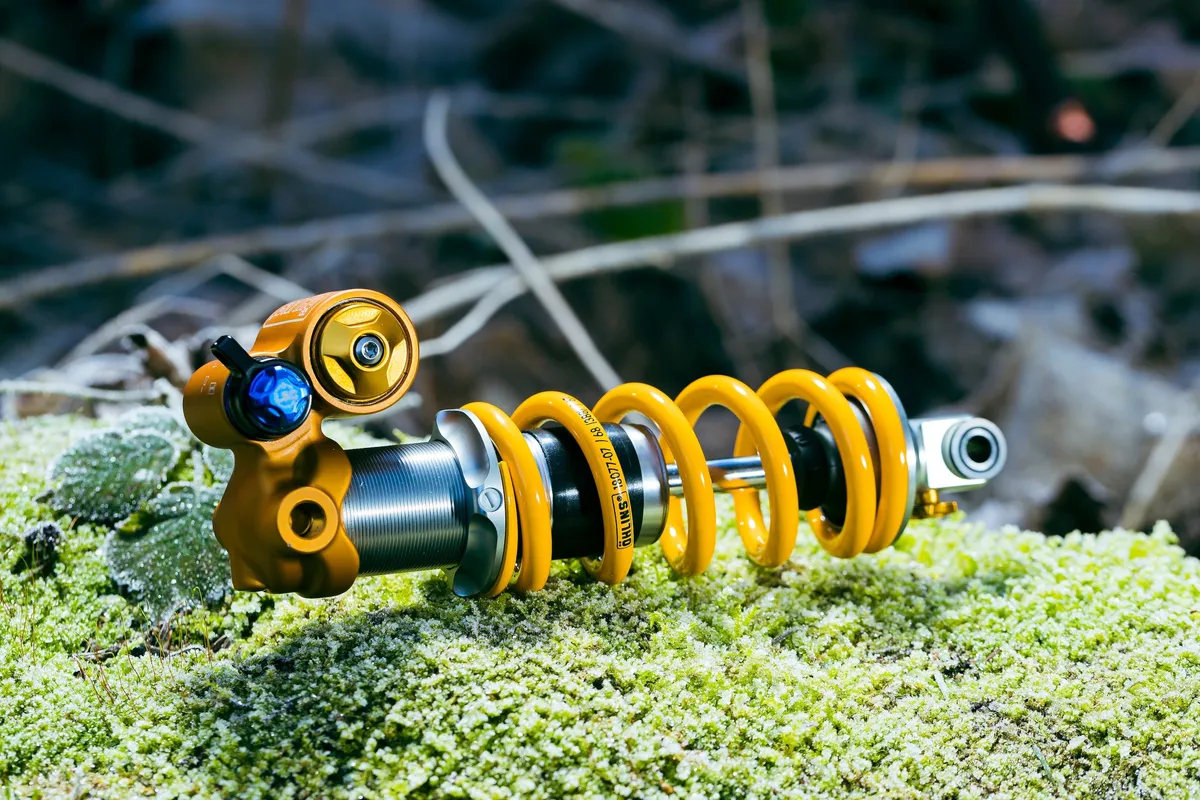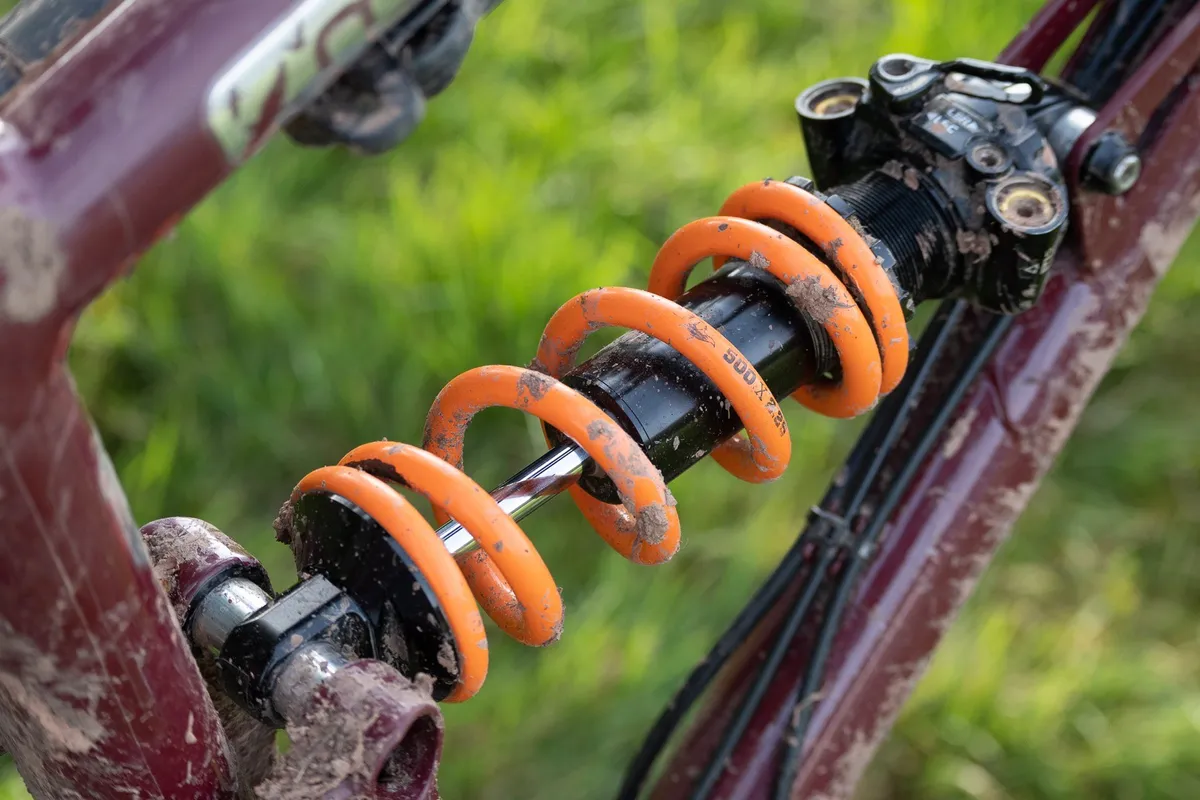Although air-sprung shocks are almost universal on standard trail and enduro bikes, coil shocks are becoming increasingly popular among professional enduro riders, and that influence is filtering through to the rest of the market.
Richie Rude was among the pioneers of swapping out air-sprung shocks in favour of a coil. With the addition of lock-out levers, coil-sprung shocks have a wider range of uses than ever before.
With that in mind, what are the pros and cons of using a coil-sprung rear shock on enduro bikes or even trail bikes, and should you consider upgrading to one?
Here, we look at the similarities and differences between air and coil rear shocks and help you decide which shock type is best for you.
We've also spoken to RockShox rear shock product manager Chris Mandell to hear the brand's views on both spring types.
What is a coil shock?

Featuring a steel or titanium spring wrapped around the shock body, coil-sprung shocks usually have a linear spring rate, which means the force required to compress it increases at the same rate in relation to how compressed it is.
For example, a 500lb/in spring that is 10 inches long will require 500lb of load to compress it one inch. For every extra inch of compression, an additional 500lb of load will be required. Compressing the spring to 5 inches will require 2,500lb of load. This is why the spring has a linear rate.

Coil shocks were traditionally found on downhill bikes, where longer race runs favoured damper consistency and resistance to heat build-up, and weight was much less of a consideration.
Dampers in air shocks can heat up during long runs, causing the oil's viscosity to become thinner, affecting the shock's consistency.
Having said that, air shocks aren't uncommon on DH rigs due to their high tunability. The longer stroke and eye-to-eye shock lengths have meant heat build-up is less of a problem because the leverage rates are lower, meaning the shock isn't having to work as hard compared to a bike with a shorter-stroke shock.
Air shock designers have done more recently to make shocks better at dissipating heat than they have previously.
What is an air shock?

Air-sprung shocks are almost ubiquitous on trail and enduro rigs, and use pressurised chambers.
Most shocks have two chambers – a positive spring chamber that supports the rider’s weight and a negative spring chamber that counters this and can help improve sensitivity by ‘sucking’ or ‘pulling’ the shock’s shaft into its travel. Rubber seals are used to stop pressurised air from escaping.
The spring rate of an air shock is progressive, unlike a coil spring, which means that as it compresses, the rate at which it becomes harder to compress isn’t related in a linear fashion to how much it's compressed.
Is my bike compatible with a coil or air shock?

Your bike’s frame design and suspension kinematics will dictate whether a coil or air shock is compatible with your bike.
Due to their tunability, most mountain bikes tend to use air shocks as standard, with suspension kinematics being designed around them.
However, a growing number of bikes work with both air and coil shocks – Whyte’s G-180 and Santa Cruz’s Nomad, for example – and it's becoming a more common practice.
If you’re unsure, speak to your bike/shock brand or a suspension tuner.
Coil shock pros

Increased small-bump sensitivity, decent midstroke support and, often, better damper performance are the biggest benefits of coil-sprung shocks.
This is due partly to the reduced stiction, or static friction. The shock moves due to a reduced number of seals compared to an air-sprung shock, so a lower breakaway force is needed to activate the travel over smaller bumps.
This means they’ll help keep your rear tyre glued to the trail when things get loose, giving a more planted feel and better rear-wheel traction.
Coil shocks generally require less maintenance, too, thanks to this reduced number of seals.

Mandell says: “While both shocks require damper services, coil shocks don’t need the air can service that we recommend after 50 hours of ride time.
“Although the architecture of both shocks is different, they share the same level of complexity when it comes to maintenance.”
Coil-sprung shocks are also more resistant to heat build-up, so remain more consistent on long downhills.
Coil shock cons

One disadvantage is it can be harder to find the right spring rate for your weight and riding style. This is because you have to physically swap coil springs, requiring you to remove the shock from the bike and then the coil from the shock in order to switch.
Coil spring rates come in set increments, and if your requirements mean you need a spring weight that isn’t available, you will struggle to get your shock set up correctly.
Coil shocks can offer less bottom-out resistance than air shocks, although some brands have progressive springs and incremental rate adjustment. Also, large bottom-out bumpers can help to improve things.
Chris argues that “If you are a rider who puts lighter inputs into the bike, floating on rather than pushing the bike down the trail, you shouldn’t need the bottom-out protection of an air shock, making the linear spring rate of a coil more attractive.”
Coil shocks can be heavier and bulkier (thanks to the weight of the coil spring), plus it’s worth remembering they won’t be compatible with all frames, both in terms of fitment and the frame’s suspension kinematics.
Air shock pros

With no metal coil to add mass, air-sprung shocks are generally much lighter and are therefore the better option for the kilo-conscious.
The air spring pressure can be tuned almost infinitely for different rider weights and preferences, using a shock pump.
Mandell says: “One of the main reasons air shocks feature on so many new bikes is because you can set it up on the shop floor and send it out the door.”
You can also increase or decrease the progressivity of the spring using volume spacers, to alter the bottom-out resistance.
In terms of ride feel, air shocks tend to give better bottom-out resistance, and their springs can be tuned to work with compression damping to improve mid-stroke support.
Air shock cons

Air shocks aren’t as supple as coil shocks due to the extra seals needed to keep the air under high pressure, which adds friction. Because of these seals, they require maintenance more often, too.
The initial ‘off-the-top’ stiction is a main contributor to an air shock's reduced sensitivity when compared to a coil. Although, Mandell adds, “Once the shock gets moving the stiction essentially disappears.”
The size and pressure of the air shock’s negative spring chamber can also dictate how supple they are. Air shocks with larger negative springs inflated to higher pressures are generally more supple than those with smaller springs, but still struggle to beat the smoothness of a coil shock.
Air shocks are also affected more by heat build-up because compressed air gets hot – think of a tyre pump. This can increase spring stiffness and reduce damping performance as the oil warms up, and can produce an inconsistent ride feel during longer descents.
However, Mandell argues: “The viscosity change in the oil is minimal compared to the overall percentage of damping force being provided by the shock.”
So what’s best for you?

As you might have already guessed, like most gear choices, there’s no one best option for all: it comes down to the type of terrain you’re riding and where, as well as personal preference and your riding style.
Mandell's take is: “If you are riding very steep terrain then a coil shock will perform better, as it allows the bike to sit back into its travel more, keeping the head angle slacker, which should inspire more confidence.”
Besides which type of shock you plump for, remember there are many other elements that will affect your suspension performance, such as the quality of oil, when it was last serviced, having the correct spring rate, and how it is set up.

